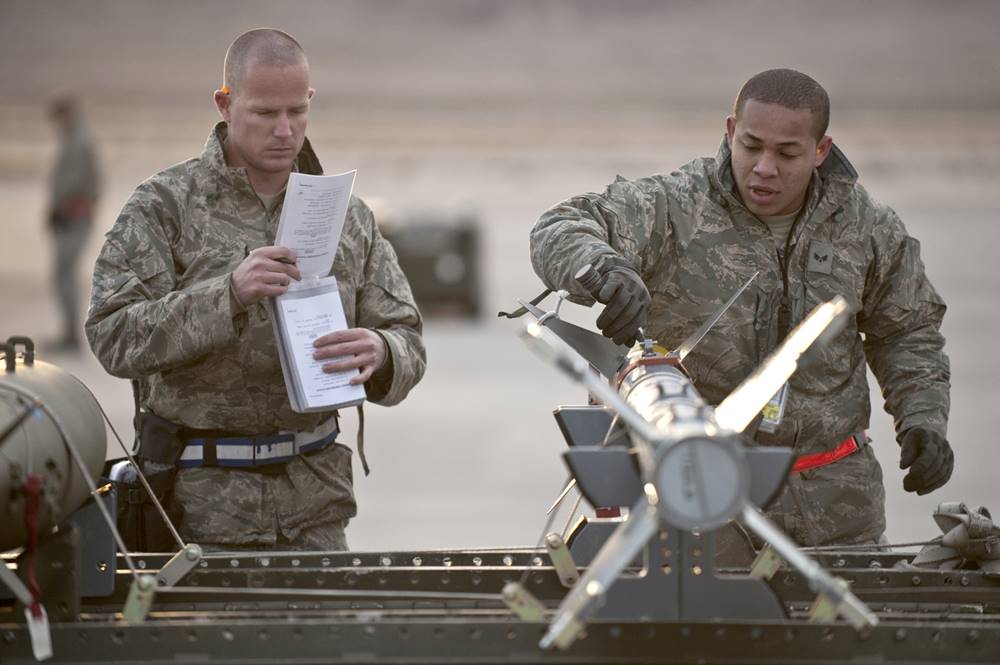Becoming A Military Supplier [A Complete Guide]
Becoming a Military Supplier Guide [2025 Update]
Table of Contents
- The Defense Industry: A Growing Opportunity
- Top Myths About Becoming a Military Supplier—Debunked
- Recent Trends and Reforms to Watch
- Checklist: How to Register and Qualify as a Military Supplier
- Understanding Military Purchasing
- Mastering the Bidding Process
- Supplying Prime Vendors
- Challenges and Risk Management
- Action Plan for 2025 and Beyond
- Conclusion
Joining a multi-billion-dollar marketplace never gets easier, but becoming a military supplier is a reachable objective for most companies. With persistence, commitment, and patience, a firm can gain access to a stable source of work and one of the safest and most resilient industries in the world.
This updated guide to becoming a military supplier has been revised to 2025 with regards to current industry trends, budget figures, and acquisition reforms.

Defense Industry a Growing Opportunity
Defense and procurement are still a mainstay of American manufacturing, technology, and innovation. At $849 billion for 2025, the DoD budget is another year of steady growth in spending on defense. Of that, over $770 billion worth of industrial contracts are awarded each year, and nearly all of that work is available to both large and small companies. Arm sales are also at record highs, with U.S. defense exports in 2025 being $322.5 billion.
Unlike most other production sectors, defense contracting has remained largely onshore. All components ranging from advanced electronics to common provisions are manufactured by skilled U.S. contractors. To attain long-term security, becoming a military supplier remains one of the safest and most reliable methods of industrial employment today.
Defense Industry & Market Highlights (2025 Update)
- $849 billion → 2025 U.S. Department of Defense budget — another year of steady growth.
- $770 billion+ in industrial contracts awarded annually to private suppliers.
- $322.5 billion in U.S. defense exports (2025) — record-high arms and tech sales.
- 97 % of DoD contracts completed and delivered without incident.
- 50 % of defense spending goes to non-combat items – textiles, packaging, fuel, IT, construction, etc.
- 99 % of manufacturers make something the DoD buys regularly.
- 23 % minimum of all federal contracts must go to small businesses (by law).
- 14-day average payment under the Prompt Payment Act (legally due ≤ 30 days).
- 12 years = mean time to first capability for large programs (GAO 2025 report).

Top Myths About Becoming a Military Supplier Debunked
There is a lot of confusion about the accessibility of government contracts and what it takes to work with the military. And the following are some of the most common misconceptions about supplying the military and the reality behind them.
Myth #1: The government doesn’t pay contractors in time.
False. Federal law requires that government buyers make payment in 30 days upon billing. DoD payments are made in practice in 14 days under the Prompt Payment Act. Overdue balances will accrue interest automatically.
Myth #2: Only big businesses can be awarded defense contracts.
False. By law, the DoD is required to award a minimum of 23% of all federal contracts to small businesses. During FY 2024, the agency did considerably better than that, awarding billions of dollars of contracts to small- and medium-sized firms. The Department also makes special small-business set-asides and actively promotes small-business-small-business and small-business-large-business partnering in order to build the defense supply base.
Myth #3: The government is not a good customer.
False. Defense contracts are the safest in the world. Even in chaotic world markets, the DoD is a steady buyer of maintenance, upgrade, and innovation. 97% of the contracts are completed and delivered without incident, providing steady and stable payment streams.
Myth #4: Military manufacturing is all about weapons and airplanes only.
False. Noncombat items are the target of defense appropriations for about 50% of budgetary expenses every year, ranging from textiles, packaging, and tires to information systems, fuel, and construction supplies. The DoD buys medical equipment and batteries, software, maintenance and repair, and even laundry soap and office supplies. Ninety-nine percent of all manufacturers produce something the military buys regularly.
Myth #5: The contracting process never changes.
False. 2025 is a year of across-the-board procurement reform for the federal government, underway by virtue of the newly issued Executive Order on Modernizing Defense Acquisitions and the Streamlining Procurement for Effective Execution and Delivery (SPEED) Act. The DoD also stepped up the use of Other Transaction Authorities (OTAs) and Commercial Solutions Openings (CSOs), streamlined channels that speed up the acquisition process and allow for nontraditional suppliers to enter.

Recent Trends and Reforms to Watch
The 2025 Executive Order on Modernizing Defense Acquisitions drove recent policy changes for the DoD. The DoD, the DoS, and the DFC have issued new acquisition guidelines to improve and accelerate the procurement process, reduce risk, and encourage innovative solutions. Congressional bills like the SPEED Act also raised focus on streamlining the contracting process and increasing transparency. While the DoD has improved over the last few decades, a June 2025 GAO report found mean time to first capability for large acquisition programs remains at 12 years.
Among other notable updates, we are also seeing the accumulation of Cybersecurity Maturity Model Certification (CMMC) 2.0 requirements in 2025 with enforced compliance coming on November 2025. All businesses subject to the CMMC mandate need to currently have third-party attestation of their cybersecurity position to control Controlled Unclassified Information (CUI). A small-business plan for the DoD is also a priority number one for the DoD in 2025, with expanded outreach and mentor-protégé initiatives to guide small innovative firms into the defense marketplace.
Checklist: Necessary Steps to Becoming a Military Supplier
To simplify the process of becoming a military supplier, the following first steps will get you started on your way. There are crucial registration steps you must begin with. To manufacture for the military, follow this straightforward checklist:
- Obtain a Unique Entity Identifier (UEI). The UEI is the new federal government equivalent of the former D-U-N-S number. You receive your UEI when you register in SAM.gov.
- Get an Employer Identification Number (EIN). You will need an active IRS-issued taxpayer ID to be able to register and bid on contracts.
- Register with SAM.gov. You must have an active SAM profile, which is used on all federal awards. This includes company ownership, business type, financial data, and capabilities.
- Receive a CAGE Code. You will receive a Commercial and Government Entity (CAGE) code after registering with SAM. The CAGE code is used on all government purchases and transactions.
- Submit a Capability Statement. You will want to keep in mind submitting a concise statement or brochure describing your company’s capability, capacity, and past performance history.
- Fill out DD Form 2345. All vendors must fill this form via the U.S. Joint Certification Office to acquire access to unclassified military technical data.
- Meet Cybersecurity Requirements. You must meet cybersecurity requirements under CMMC 2.0 and DFARS.
- Get Small-Business Certifications. The certifications are 8(a), HUBZone, Women-Owned (WOSB), and Service-Disabled Veteran-Owned (SDVOSB). The certifications are for award-eligible business in certain categories.
- Meet export compliance requirements. Any company dealing with defense products is bound to comply with ITAR and EAR regulations and must be registered under the Directorate of Defense Trade Controls (DDTC).
- Meet Quality & Audit Readiness standards. ISO 9001 or AS9100 certification will generally be specified on all contracts and will enhance your credibility.
Understanding Military Purchases
Now that your company is registered, certified, and ready to begin manufacturing for the US military, it’s time to pay attention to how the military makes their purchases. Being successful at military manufacturing involves paying attention to their purchasing protocols and using them to your advantage.
The DoD uses a variety of channels of purchase. Contracts may be small (micro), large, Other Transaction Authorities (OTAs), or Indefinite Delivery / Indefinite Quantity (IDIQ) contracts.
- Micro Purchases: Contracts under $10,000, traditionally approved by the purchasing office and signed through Government Purchase Cards (GPCs).
- Simplified Purchases: Contracts from $10,000 to approximately $250,000 that should have at least three quotations. Small businesses will get preference for these contracts.
- Major Purchases: Contracts in excess of $250,000 that are normally solicited and advertised to SAM.gov, with competitive full proposals.
- Other Transaction Authorities (OTAs): Used to procure R&D, prototype, or advanced technology solutions without the full set of rules that would otherwise be employed for normal contracts.
- Indefinite Delivery / Indefinite Quantity (IDIQ) Contracts: Awarded to a contractor, but with no fixed schedule or guaranteed quantity of orders.
Continued below …
Do You Need Help With Manufacturing?
Our team of seasoned manufacturing specialists is ready to understand your unique needs and craft a tailor-made plan to optimize your product creation. We offer a comprehensive suite of manufacturing solutions, encompassing both domestic (USA) and international (Mexico) options. Let’s unlock the full potential of your manufacturing process. We’ll guide you every step of the way. Contact us for a complementary consultation.
Mastering the Bidding Process
The next phase in the process of becoming a military supplier is actively seeking out and bidding on contracts. First, seek out the Small Business Administrator when visiting a base, and ask what units might be able to use what you produce. Next, you will want to develop contacts in each S-4 office handling logistics for the battalions or brigades. Also, be sure to check to see which special classifications you might fit into. These will help open up a competitive edge. Some of the possible military manufacturers classifications to ask about include:
- Small Disadvantaged Business Concern (SDB)
- Certified 8(a) Firm
- Woman Owned Small Business (WOSB)
- HUBZone Empowerment Contracting Program
- Service Disabled Veteran (SDVOSB)
- Veteran-Owned Small Business (VOSB)
It also helps to pay a visit to a nearby DoD Procurement Technical Assistance Center. There are nearly 100 centers around the country, and services are usually free. These centers will assist you in learning about the bidding process, proper marketing techniques, and how to create successful proposals.
Winning proposals typically include:
- A compelling Capability Statement outlining key business strengths, statistics, skills, past awards, and performance history
- Thorough answers to all questions and requirements in the solicitation document
- A clear roadmap to resolving the military’s problem with clear language detailing how your company is the best choice to meet this need
Supplying Primary Vendors
Many small and medium-sized manufacturers supply major defense prime contractors instead of dealing directly with the DoD. Large primes such as Boeing, Lockheed Martin, and Raytheon purchase massive quantities of parts, assemblies, and systems from smaller companies. It is typically very profitable and less cumbersome to deal with primes than with the government. Join prime contractor supplier websites and have all of the quality, security, and compliance expectations in mind before bidding.
These very large companies are trusted and preferred vendors, typically known in the industry as primary vendors or primary contractors. Many smaller manufacturing companies find it preferable to supply these companies who in turn supply the military.
One such primary vendor is Boeing, who buys many products from smaller manufacturers, like:
- Avionics components
- Microcircuits and other aerospace commodities
- Electrical, hydraulic and mechanical systems
- Lighting, lavatories, and other interiors
The company requires registration on their site and certain certifications. Contractors may place bids with Supplier Management and begin working with a Boeing business unit on specific manufacturing projects for the military. Other primary contractors, like AM General, have similar processes for partnering with smaller companies.
Procurement, Compliance & Supplier Facts
- Micro purchases: < $10 000 — approved via Government Purchase Cards.
- Simplified purchases: $10 000 – ≈ $250 000 — require 3 quotes; small business preference.
- Major purchases: > $250 000 — competitively bid on SAM.gov.
- CMMC 2.0 compliance deadline: November 2025 (third-party attestation required).
- New UEI replaces D-U-N-S number for SAM registration.
- Essential registrations: UEI → EIN → SAM.gov → CAGE Code.
- Mandatory forms: DD Form 2345 (Joint Certification Office for technical data access).
- Typical quality standards: ISO 9001 or AS9100 required for credibility.
- Key small-business certifications: 8(a), HUBZone, WOSB, SDVOSB, VOSB.
- OTAs & CSOs (Other Transaction Authorities, Commercial Solutions Openings) — fastest routes for non-traditional suppliers.
- Nearly 100 PTAC/Apex Accelerator centers nationwide offer free bid-prep support.

Challenges and Risk Management
Defense contracting is not without risk and complexity. Long sales cycles, strict cybersecurity and compliance requirements, cybersecurity audits, and intense peer competition all have the ability to stretch resources too far. Budget cuts and program terminations do occasionally occur, and smaller vendors must be able to roll with the punches.
The key to success with government contracting is preparation and maintaining your compliance systems up when you go through all the red tape. The most successful vendors diversify their customer base and slow down to build long-term relationships with both government and private-sector partners.
Action Plan for Becoming Military Supplier
- Register your UEI, SAM, and CAGE.
- CMMC 2.0 cybersecurity up.
- Obtain small business certifications to access small business set-aside contracts.
- Develop a strong capability statement and approach low-value or local contracts first.
- Look for OTA and CSO opportunities for emerging products or solutions.
- Connect with Apex Accelerators, PTACs, and OSBP programs.
- Compete to become partners with prime contractors and gradually establish a position in the defense supply chain.
- Keep informed with DoD reforms and changing requirements.
Conclusion
As a DoD supplier is a tangible and rewarding goal. Whether your company is bidding head-to-head on DoD contracts, subcontracting with OTA programs, or supplying parts to a major prime vendor, there are a number of ways into the market.
While U.S. defense expenditures rise each year, there is another generation of acquisition reforms to simplify the process and a growing demand for high-tech manufacturing and technology coming fast and furious, there is no time better than today to get involved. Through this new guide to becoming a military supplier, your business can lay claim to one.
About the Author

Dean Marsman
Dean helps manufacturers lower costs and accelerate production by connecting them with advanced contract manufacturing solutions at Prince Manufacturing. Dean partners with companies across industries to eliminate waste, optimize value streams, and enhance product quality.
Driven by lean manufacturing principles, Dean and the Prince team deliver end-to-end capabilities including sheet metal fabrication, powder and e-coating, CARC finishing, metal stamping, and contract assembly. Their mission: to help OEMs and industrial manufacturers stay competitive by reducing risk, improving agility, and achieving faster time to market.

